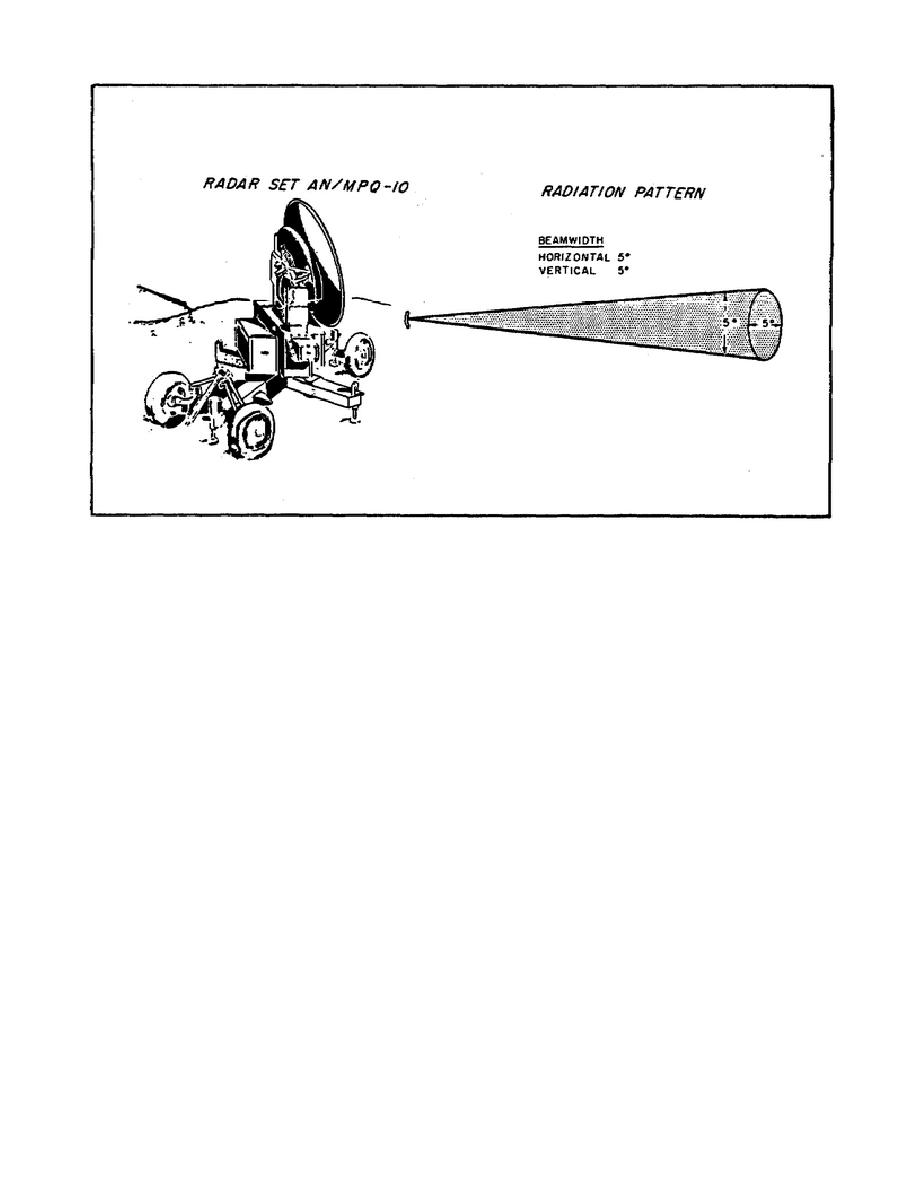
Figure 146.
Radar Set AN/MPQ-10 Antenna.
b. RF energy is carried to the antenna by a rigid coaxial transmission
line that goes through the center of the reflector.
The coaxial line
terminates at the dipole feed in front of the dish. The dipole is located
at the focal point of the paraboloid.
Radar set AN/MPQ-10 uses the same
dipole feed already described and illustrated in Figure 146.
c. The paraboloid reflector focuses the RF pulses radiated by the
dipole antenna into a narrow cone-shaped beam. The reflector also focuses
the received target echo pulses on the dipole antenna, thereby increasing
the intensity of the received pulses.
d. Now, let's look at a reflector that is just a section of a dish.
25. Radar set 4N/SPN-5 uses an orange peel reflector.
a. Figure 147 shows the AN/SPN-5 radar antenna and its fan-shaped
radiation pattern. The AN/SPN-5 is a navigational radar used on many types
of boats and ships. For navigational purposes, the antenna must send out a
beam that is narrow horizontally and broad vertically. To get the correct
beamwidths, the set uses a section of dish reflector. We call the reflector
an orange peel because of its shape.
b. The orange peel produces the fan-shaped radiation pattern shown.
The short height of the reflector makes the beam broad vertically, and the
long width makes the beam narrow horizontally.
The narrow horizontal
beamwidth gives
203



 Previous Page
Previous Page
